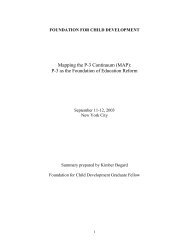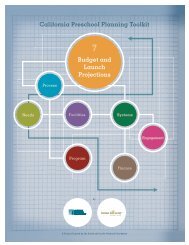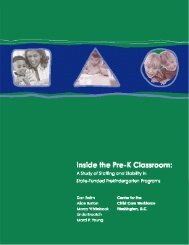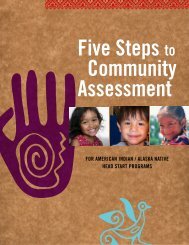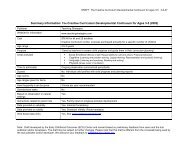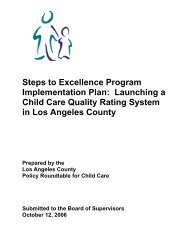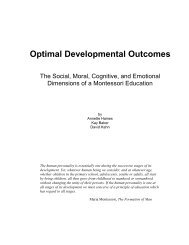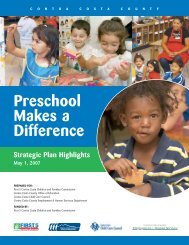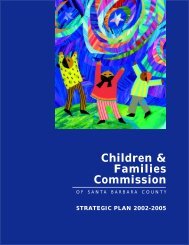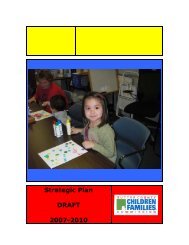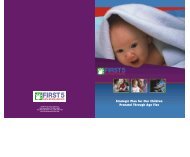Download this file - Plan4Preschool
Download this file - Plan4Preschool
Download this file - Plan4Preschool
You also want an ePaper? Increase the reach of your titles
YUMPU automatically turns print PDFs into web optimized ePapers that Google loves.
• Assess the progress of English-proficient pupils in acquiring the skills of listening,<br />
speaking, reading, and writing in English.<br />
School districts are required to administer the CELDT to all students whose home<br />
language is not English within 30 calendar days after they enroll for the first time in a<br />
California public school. Districts also are required to administer the CELDT annually to<br />
identified English learners (ELs) until they are reclassified to fluent-English proficient<br />
(FEP) during the annual assessment window from July 1 through October 31.<br />
CELDT data are used to calculate the annual measurable achievement objectives<br />
(AMAOs) 1 and 2 required by Title III. Each local educational agency (LEA) receiving<br />
Title III funds is accountable for meeting the AMAOs established by the SBE beginning<br />
with the 2003-04 school year. The CDE provides LEAs with annual Title III<br />
Accountability Reports.<br />
The CELDT assesses listening, speaking, reading, and writing skills in English and is<br />
aligned to the English-language development (ELD) standards adopted by the SBE. In<br />
California, students in kindergarten and grade one are only assessed in listening and<br />
speaking.<br />
In March 2006, the SBE approved a new performance-level scale. CELDT performance<br />
levels are: beginning, early intermediate, intermediate, early advanced, and advanced.<br />
CELDT results show the overall English proficiency level attained by students as well as<br />
in each skill area. Individual student reports and student data <strong>file</strong>s are sent to the school<br />
district. Districts must inform parents of test results within 30 calendar days of receiving<br />
student results from the testing contractor.<br />
The CDE posts three types of reports (all assessments, annual assessments, and initial<br />
identification assessments) at four levels (state, county, district, and school) on the<br />
Internet annually. Summary results are reported for all students and for a number of<br />
reporting categories that include gender, enrollment in specified programs, and primary<br />
languages. These results are posted on the CELDT Web site at http://celdt.cde.ca.gov.<br />
Reclassification guidelines established by the SBE clarify the EC criteria in Section<br />
313(d) to be used in reclassifying a pupil from EL to FEP.<br />
For more information regarding the CELDT, contact the CELDT and Psychometrics<br />
Unit, at (916) 445-8420 or by e-mail at celdt@cde.ca.gov. Information is also available<br />
on the CELDT Web site at http://www.cde.ca.gov/ta/tg/el.<br />
Physical Fitness Testing<br />
Since 1996, California Education Code (EC) Section 60800 has required that each<br />
district administer a state-designated physical fitness test to all students in grades five,<br />
seven, and nine. During the month of February, March, April, or May, the governing<br />
board of each school district maintaining any of grades five, seven, and nine shall<br />
administer to each pupil in those grades the physical fitness test. The test used is the<br />
41



